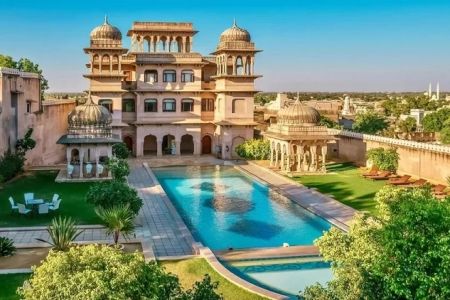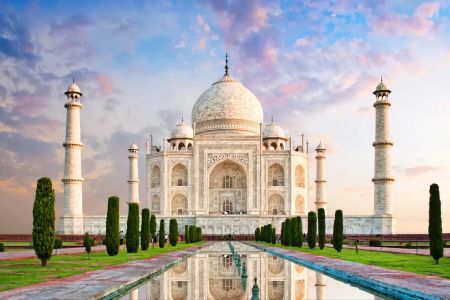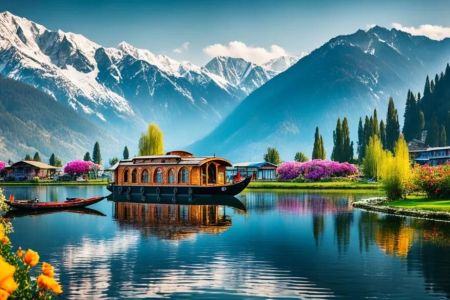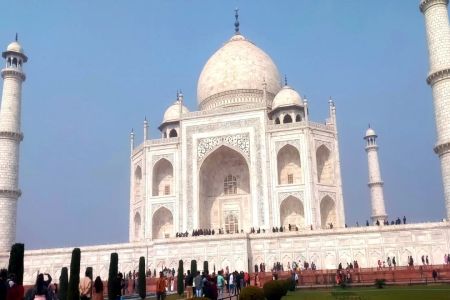Best Historical Sites to Visit in India: A Traveler’s Guide
Taj Mahal - A Symbol of Love
The Taj Mahal, located in Agra, is one of the most iconic and revered historical sites in India. This magnificent white marble mausoleum was built by Emperor Shah Jahan in memory of his wife Mumtaz Mahal. It stands as a symbol of eternal love and is considered a masterpiece of Mughal architecture. Visitors to the Taj Mahal are often captivated by its breathtaking beauty, the serene reflection in the surrounding water pools, and the intricate carvings that adorn its walls.
As one of the Seven Wonders of the World, the Taj Mahal attracts millions of tourists each year, and walking through its gates, you can’t help but feel the weight of history and the emotions it embodies. Exploring the nearby Agra Fort, another historical landmark, provides a deeper insight into the rich Mughal past.
Red Fort - The Heart of Mughal Architecture
Situated in the heart of Delhi, the Red Fort is a prime example of Mughal architecture and a testament to India’s royal history. Built by Emperor Shah Jahan, the fort’s massive red sandstone walls house various impressive structures, including the Diwan-i-Aam and Diwan-i-Khas, which were once used for royal meetings and ceremonies. The fort is not just a historical site but a place where India’s independence movement gained momentum. It was from here that India’s first Prime Minister, Jawaharlal Nehru, delivered his famous speech on August 15, 1947.
Visitors to the Red Fort can wander through its opulent courtyards, gardens, and museums, learning about India’s history and culture along the way. The site is also known for its nightly sound and light show, which brings the history of the fort to life in a visually spectacular way.
Qutub Minar - A Tower of Triumph
Located in Delhi, the Qutub Minar stands as a proud symbol of India’s medieval history. This towering structure, standing at 73 meters, is the tallest brick minaret in the world. Built by Qutb-ud-Din Aibak, the founder of the Delhi Sultanate, the Qutub Minar is not just a feat of architecture but also an important part of India’s Islamic history. The intricately carved stonework and inscriptions on the minaret tell stories of the era it was constructed in.
The Qutub Minar is surrounded by several other historical ruins, including the Quwwat-ul-Islam mosque, making it a significant site for history buffs. The peaceful atmosphere and the towering presence of the minaret make this site one of Delhi’s must-visit locations.
Jaipur Palace - The Pink City’s Jewel
Jaipur, known as the Pink City, is home to one of India’s most stunning royal palaces: the City Palace. This sprawling complex of courtyards, gardens, and palaces was the residence of the Maharaja of Jaipur. Built in the 18th century, the City Palace blends Mughal and Rajput architecture, making it an architectural gem. The palace features impressive gates, intricate frescoes, and a museum that showcases artifacts from the royal family’s history.
Exploring the City Palace gives you a glimpse into the royal life of Rajasthan’s past, with the opportunity to admire both the grandeur of the architecture and the fine craftsmanship of the interiors. The nearby Jantar Mantar, an astronomical observatory, is also a must-see when in Jaipur, providing an additional layer of historical exploration.
Khajuraho Temples - A Spiritual Masterpiece
Known for their stunning erotic sculptures, the Khajuraho Temples in Madhya Pradesh are some of India’s most unique historical sites. These temples were built between 950 and 1050 AD by the Chandela dynasty and are now a UNESCO World Heritage site. The temples are not just celebrated for their architecture but also for the intricate carvings that depict various aspects of life during the medieval period.
Visiting Khajuraho offers more than just a spiritual experience; it’s an opportunity to delve into India’s ancient culture and artistry. Each temple is dedicated to different Hindu gods and goddesses, and their carvings showcase the philosophy, art, and social life of the time. The best time to visit Khajuraho is during the annual dance festival, where classical dancers perform in the temple complex under the stars, adding a magical ambiance to the historic surroundings.











